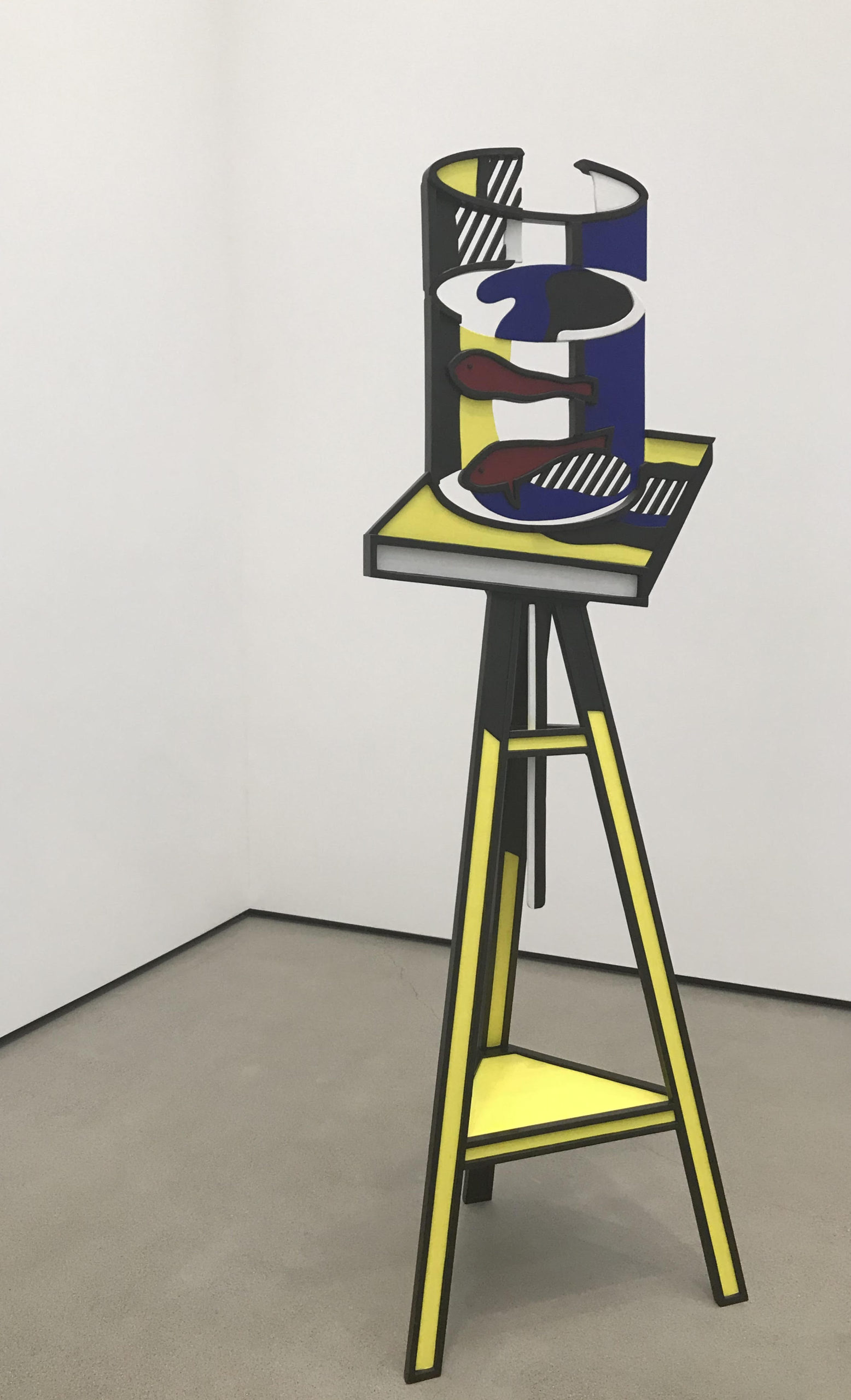
Roy Lichtenstein (1923–1997) is a New York artist who is considered an icon in the Pop art movement in the 1960s. It is interesting that Lichtenstein described his pop art not as American painting but rather industrial painting. Along with contemporaries like Andy Warhol and Jasper Johns, Lichtenstein defined Pop art through parody. His work was inspired by comic strips, and many of his best-known works employ techniques used in comic book art including speech bubbles. Not that the cost of a work determines its ultimate significance, but his work entitled Masterpiece was sold in 2017 for a stunning $165 million. Prophetically, this work contained a speech bubble that reads, “WHY, BRAD DARLING, THIS PAINTING IS A MASTERPIECE! MY, SOON YOU’LL HAVE ALL OF NEW YORK CLAMORING FOR YOUR WORK!”
The work shown here is one of the few sculptures he made. The work, entitled Goldfish Bowl (1977), is a painted bronze sculpture. It is odd that a whimsical, lighthearted sculpture, which appears it could be made out of painted plywood, is being immortalized in bronze — the material of choice of traditional master sculptors. What I find most fascinating about this piece is that the painting technique of highlighting the edges with dark lines visually flattens this three-dimensional sculpture into a two- dimensional experience. It is a hard object to visually understand. The work manipulates the observer’s visual mechanisms like a carnival fun house and leaves one wondering what is real and what is unreal.
